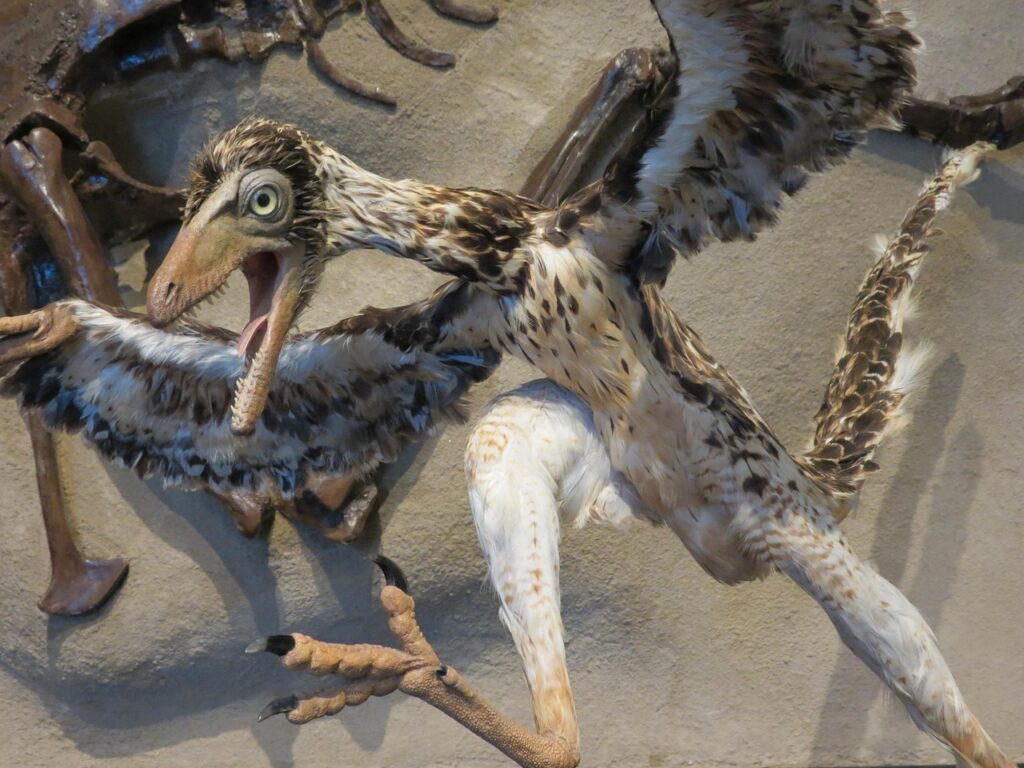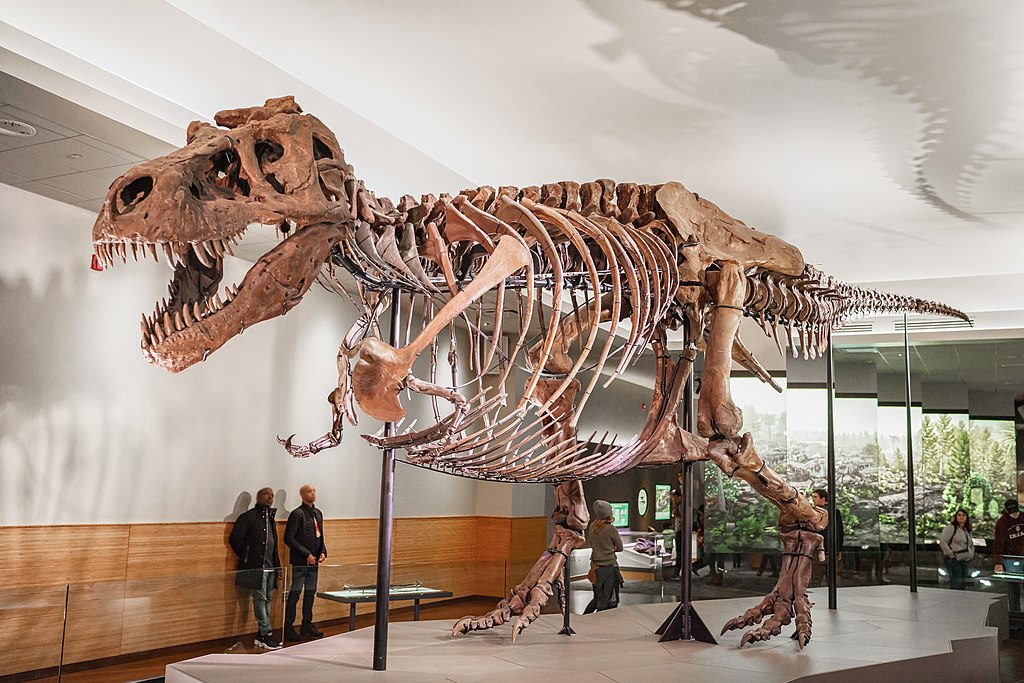In recent years, a fascinating shift has occurred in science journalism. Dinosaurs, those magnificent creatures that once ruled our planet, are experiencing a renaissance in public attention. This revival isn’t happening in Hollywood studios or university paleontology departments, but through the determined efforts of journalists who are bringing prehistoric life back into our everyday consciousness. Their work goes beyond mere reporting—it represents a crucial bridge between complex scientific discoveries and public understanding. As new fossils emerge and technologies advance, journalists are translating these findings into compelling narratives that capture imagination while educating audiences about Earth’s remarkable history. This renewed focus on dinosaurs matters deeply, not just for scientific literacy, but for how we understand our planet’s past and future.
The Decline of Dinosaur Coverage in Mainstream Media

Following the Jurassic Park phenomenon of the 1990s, dinosaur coverage in mainstream media experienced a gradual decline. Major news outlets reduced their science reporting staffs, and paleontology stories were often relegated to brief mentions or sensationalized headlines without substantial context. This trend mirrored broader cuts to science journalism, with specialized reporters replaced by general assignment journalists lacking deep subject knowledge. By the early 2010s, substantive dinosaur coverage had largely retreated to specialized publications and academic journals, creating a widening gap between scientific discoveries and public awareness. The scientific literacy that had blossomed during the Jurassic Park era began to wither as fewer media gatekeepers prioritized paleontological discoveries, regardless of their significance to understanding Earth’s history.
The New Wave of Dinosaur Journalism

Around 2015, a new generation of science journalists began reversing this trend, approaching dinosaur paleontology with renewed vigor and journalistic rigor. Writers like Riley Black (formerly Brian Switek), Gemma Tarlach, and Joshua Sokol pioneered accessible yet scientifically accurate reporting about prehistoric life. These journalists combined traditional reporting techniques with digital storytelling, creating immersive articles that explained complex concepts through compelling narratives. Unlike previous generations of science writers, these journalists often maintained direct relationships with paleontologists through social media, allowing for rapid translation of new discoveries into public-facing stories. Their work has appeared across platforms from National Geographic and The Atlantic to specialized outlets like Discover Magazine and Scientific American, creating multiple entry points for readers with varying levels of scientific literacy. This new wave of dinosaur journalism prioritizes accuracy without sacrificing the inherent wonder that makes prehistoric life so captivating.
Digital Platforms and Visual Storytelling

The renaissance in dinosaur journalism coincides with dramatic advancements in visual storytelling across digital platforms. Today’s journalists collaborate with paleoartists, 3D modelers, and animators to create scientifically accurate visualizations that bring extinct creatures to life with unprecedented authenticity. Publications like The New York Times and The Washington Post now regularly feature interactive elements that allow readers to manipulate 3D models of newly discovered fossils or visualize how dinosaurs moved through ancient environments. These visual components transform abstract scientific concepts into tangible experiences, making paleontology accessible to audiences who might otherwise struggle with technical descriptions. The visual revolution extends to social media, where paleontology communicators use platforms like Twitter and Instagram to share striking images that generate public engagement with new discoveries within hours rather than months. This synthesis of rigorous journalism with visual innovation has created a powerful new approach to science communication that respects both scientific accuracy and audience engagement.
Breaking Down Complex Science

Perhaps the most valuable contribution of modern dinosaur journalists is their ability to translate complex paleontological concepts into accessible language without oversimplification. When scientists publish findings on isotope analysis of fossilized teeth or the aerodynamic properties of feathered dinosaurs, journalists serve as crucial interpreters who convert specialized terminology into broadly understandable explanations. This translation process requires deep knowledge of both the science and effective communication techniques. Skilled dinosaur journalists explain phylogenetic relationships without resorting to overly technical jargon while still conveying the evolutionary significance that makes these relationships meaningful. They contextualize new discoveries within the broader framework of paleontological knowledge, helping readers understand why a single tooth or footprint might revolutionize our understanding of dinosaur behavior or ecology. By making these connections explicit, journalists transform isolated scientific papers into cohesive narratives about Earth’s dynamic past.
Correcting Popular Misconceptions

Today’s dinosaur journalists dedicate significant effort to correcting persistent misconceptions that remain embedded in public consciousness decades after being disproven scientifically. Many adults still envision dinosaurs as slow, cold-blooded reptiles dragging their tails—images contradicted by modern paleontology but perpetuated through outdated media representations. Journalists actively challenge these outdated views by highlighting evidence for active metabolisms, complex social behaviors, and the evolutionary relationship between dinosaurs and modern birds. Publications now regularly feature articles specifically addressing common dinosaur myths, from the misconception that T. rex couldn’t see stationary objects to the false notion that dinosaurs were evolutionary failures rather than one of history’s most successful animal groups. This correction of the public record serves an educational function that extends beyond mere entertainment, bringing citizens’ understanding closer to the scientific consensus. By persistently updating the public’s mental image of dinosaurs, journalists help audiences develop a more accurate understanding of evolution and biological adaptation.
Humanizing Scientists and Their Work

Contemporary dinosaur journalism excels at humanizing the scientists behind fossil discoveries, portraying paleontology as a dynamic human endeavor rather than a sterile academic exercise. Feature profiles highlight diverse researchers from various backgrounds, showcasing the global nature of modern paleontology across gender, nationality, and methodological approaches. Journalists document the physical challenges of fieldwork in remote locations, the painstaking laboratory analyses that might span years, and the collaborative nature of interpreting complex fossil evidence. These human-centered narratives help readers connect emotionally with scientific processes that might otherwise seem abstract or irrelevant. By presenting scientists as relatable individuals driven by curiosity rather than remote authority figures, journalists bridge the psychological gap between academic research and public interest. These personal stories reveal how scientific knowledge emerges from human effort, creativity, and persistence, making the scientific process itself more transparent and approachable.
Global Representation and Diverse Discoveries

Modern dinosaur journalism has dramatically expanded geographical representation, moving beyond the traditional focus on North American and European discoveries to highlight significant finds from South America, Asia, Africa, and Australia. This global perspective corrects historical biases in paleontological reporting and reflects the increasingly international nature of dinosaur research. Journalists now regularly cover groundbreaking discoveries from Argentina’s Patagonia region, China’s Liaoning Province, Morocco’s Kem Kem beds, and Australia’s polar dinosaur sites, areas that received minimal attention in previous decades despite their scientific importance. This expanded coverage allows readers to understand how dinosaurs adapted to diverse environments across the ancient supercontinent Pangaea and its daughter landmasses. It also acknowledges the contributions of scientists from countries historically underrepresented in English-language science journalism. By showcasing this geographical diversity, journalists communicate a more complete picture of dinosaur evolution and ecology than was possible when reporting focused primarily on Western discoveries.
The Educational Impact on Young Minds

The resurgence of quality dinosaur journalism has particularly profound effects on young readers, who often develop lifelong interests in science through initial fascination with prehistoric life. While children have always been drawn to dinosaurs, today’s journalistic coverage provides them with scientifically accurate information packaged in engaging formats specifically designed for younger audiences. Publications like National Geographic Kids and Scholastic News now collaborate directly with paleontologists to ensure their dinosaur content reflects current scientific understanding rather than outdated concepts. Teachers report incorporating contemporary dinosaur journalism into classroom activities across subjects from biology to geography, using students’ natural enthusiasm for these ancient creatures as an entry point to broader scientific concepts. This educational impact extends beyond formal classroom settings through museum programs, library initiatives, and digital resources that build upon journalistic coverage of new discoveries. By capturing young imaginations with accurate dinosaur information, journalists help cultivate the next generation of scientifically literate citizens and potential future scientists.
Environmental Awareness Through Deep Time

Thoughtful dinosaur journalism increasingly connects prehistoric ecosystems to contemporary environmental concerns, using paleontological evidence to contextualize modern climate change and biodiversity loss. Articles explore how studying mass extinction events, particularly the end-Cretaceous asteroid impact that eliminated non-avian dinosaurs, provides perspective on current anthropogenic extinctions. Journalists explain how fossil evidence reveals ancient climate shifts and their biological consequences, creating analogies that help readers grasp the potential impacts of today’s warming climate. Coverage of dinosaur adaptations to changing environments illustrates evolutionary processes that remain relevant to understanding how modern species might respond to environmental pressures. This deep time perspective offers a unique frame of reference that extends beyond human historical records, demonstrating Earth’s dynamic nature while highlighting the unprecedented speed of current changes. By establishing these connections across geological timescales, dinosaur journalists help readers develop a more sophisticated understanding of Earth as an integrated system with a complex history relevant to current environmental challenges.
Technological Innovations in Paleontology Reporting

Modern dinosaur journalism leverages cutting-edge technologies to present paleontological discoveries in unprecedented detail and accuracy. Today’s science writers collaborate with digital specialists to create augmented reality experiences that allow readers to project scientifically accurate dinosaur models into their physical environment through smartphone applications. CT scanning technology enables journalists to show how paleontologists examine internal fossil structures without damaging specimens, often revealing previously hidden anatomical details. Advanced statistical modeling techniques allow writers to explain how researchers estimate dinosaur population densities, growth rates, and metabolic requirements based on fragmentary fossil evidence. Some publications now incorporate sonification—the translation of data into sound—to help audiences understand concepts like dinosaur vocalization possibilities based on anatomical evidence. These technological innovations transform traditional science reporting into immersive experiences that engage multiple senses while maintaining scientific accuracy. By embracing these new storytelling tools, dinosaur journalists create more memorable and effective educational experiences that deepen public understanding of prehistoric life.
The Commercial Impact of Renewed Interest

The revival of dinosaur journalism has generated significant commercial ripple effects across multiple industries. Museum attendance has surged at institutions featuring updated dinosaur exhibits that incorporate recent scientific discoveries highlighted in popular media. Publishers report increased sales of dinosaur-related books for both children and adults, with titles emphasizing current scientific understanding consistently outperforming those presenting outdated information. Documentary producers have invested in high-budget productions featuring the latest paleontological research, often directly citing quality journalism as source material for their narratives. Even the toy industry has responded to this renewed interest, with manufacturers consulting paleontologists to create more scientifically accurate dinosaur figurines and educational products. This commercial impact creates a virtuous cycle where economic incentives encourage further high-quality dinosaur journalism and scientific communication. The financial success of scientifically accurate dinosaur content demonstrates that rigorous science reporting can be commercially viable when effectively communicated, challenging the common assumption that scientific accuracy must be sacrificed for popular appeal.
Building Scientific Literacy Beyond Dinosaurs

Perhaps most significantly, dinosaur journalism functions as a gateway to broader scientific literacy, introducing readers to fundamental concepts in evolution, geology, and climate science through creatures that naturally capture human imagination. Journalists strategically use dinosaurs as entry points to explain complex scientific methods including radiometric dating, comparative anatomy, and phylogenetic analysis—techniques relevant across scientific disciplines. This approach helps audiences develop critical thinking skills necessary for evaluating scientific evidence in all contexts, from medical research to environmental policy. The attention to evidence-based reasoning in quality dinosaur journalism models how scientific conclusions are reached through data interpretation rather than mere opinion or authority. Readers who initially engage with science through dinosaur stories often develop interests in related fields like paleoclimatology, evolutionary biology, or geology. By cultivating this broader scientific curiosity, dinosaur journalists contribute to a more scientifically informed citizenry capable of engaging with complex issues facing modern society.
Why This Renaissance Matters Now

The revival of dinosaur journalism arrives at a critical moment when scientific literacy faces significant challenges from misinformation and declining trust in expertise. During an era when science itself is often politically contested, dinosaur stories provide relatively neutral territory where audiences can engage with scientific concepts without the immediate polarization that accompanies some other scientific topics. The temporal distance of dinosaurs creates a psychological space where readers can practice evaluating evidence and understanding scientific methods without triggering identity-based resistance to scientific information. Journalists leverage this openness to introduce fundamental concepts about how science works—the iterative nature of knowledge, the importance of peer review, and how theories evolve with new evidence. These lessons extend far beyond paleontology, equipping citizens with thinking tools applicable to contemporary scientific questions from vaccination to climate policy. By rebuilding public engagement with science through dinosaur journalism, writers help strengthen the foundation of shared scientific understanding necessary for addressing society’s most pressing challenges.
As journalists continue bringing dinosaurs back into mainstream consciousness, they’re doing more than simply reporting on ancient life. They’re creating vital connections between specialized scientific knowledge and public understanding, correcting misconceptions that persist in popular culture, and nurturing scientific curiosity across generations. The dinosaur journalism renaissance represents science communication at its best—accurate without being arcane, engaging without sacrificing substance, and educational without being didactic. In a world where scientific literacy has never been more important, these magnificent creatures from Earth’s past may help us navigate our present and future challenges with greater knowledge and perspective. The journalists bringing dinosaurs back to life through words and images aren’t just entertaining us—they’re helping build a more scientifically informed society.



